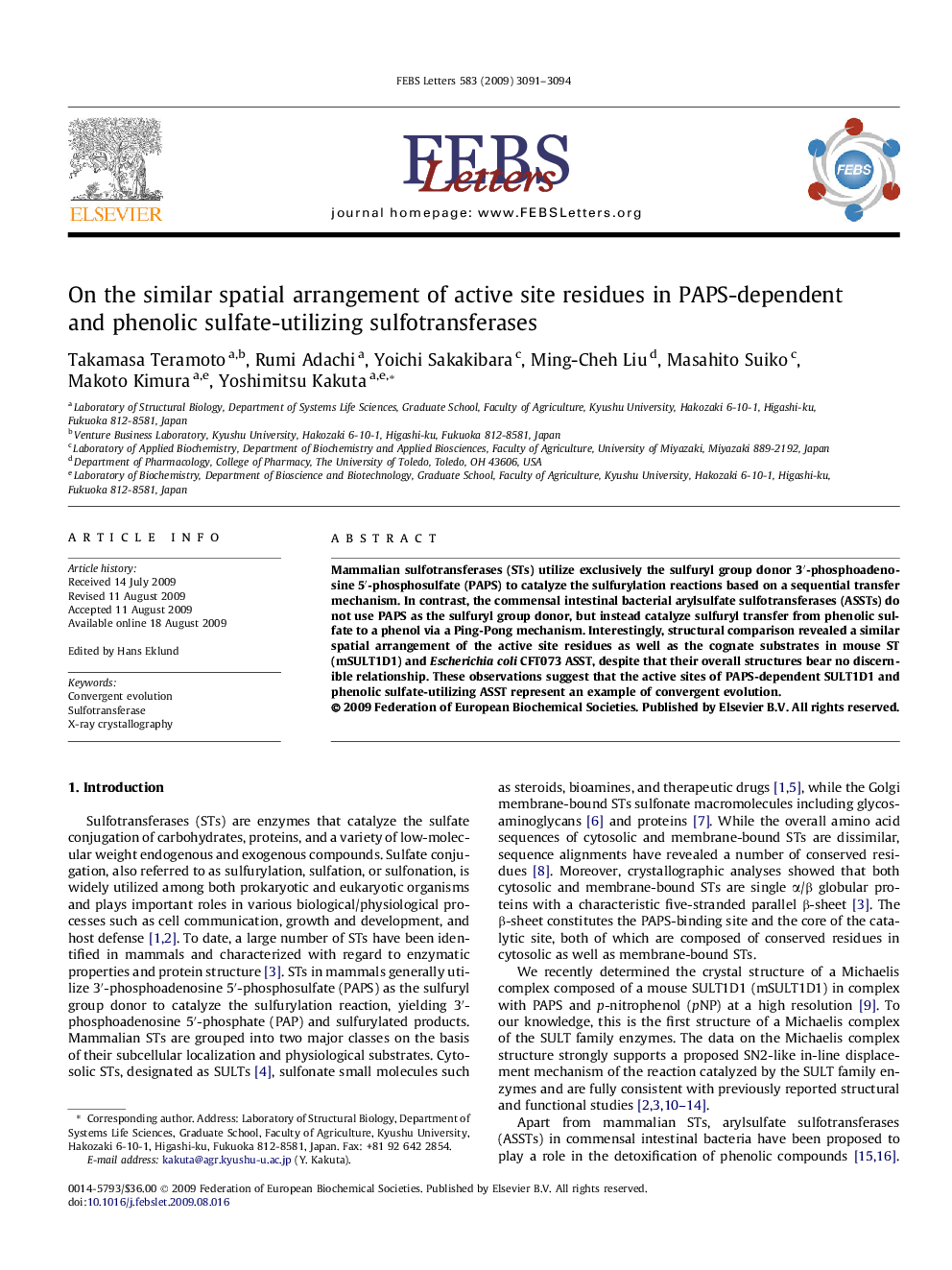| Article ID | Journal | Published Year | Pages | File Type |
|---|---|---|---|---|
| 2049805 | FEBS Letters | 2009 | 4 Pages |
Mammalian sulfotransferases (STs) utilize exclusively the sulfuryl group donor 3′-phosphoadenosine 5′-phosphosulfate (PAPS) to catalyze the sulfurylation reactions based on a sequential transfer mechanism. In contrast, the commensal intestinal bacterial arylsulfate sulfotransferases (ASSTs) do not use PAPS as the sulfuryl group donor, but instead catalyze sulfuryl transfer from phenolic sulfate to a phenol via a Ping-Pong mechanism. Interestingly, structural comparison revealed a similar spatial arrangement of the active site residues as well as the cognate substrates in mouse ST (mSULT1D1) and Escherichia coli CFT073 ASST, despite that their overall structures bear no discernible relationship. These observations suggest that the active sites of PAPS-dependent SULT1D1 and phenolic sulfate-utilizing ASST represent an example of convergent evolution.
